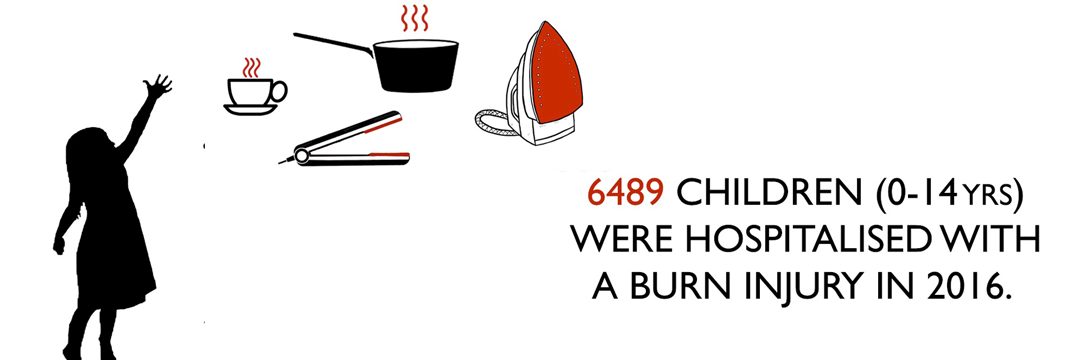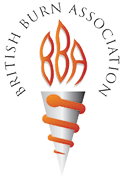A burn centre should have a dietitian service available on a daily basis for consultation.
Admission Level for a Burn Centre
In order to ensure a current high level of training and expertise in the treatment of all aspects of the burned patient, following items should be met by a burn centre:
- A burn centre should admit at least 75 acute burned patients annually, averaged over a three years period.
- A burn centre should always have at least 3 acute patients admitted in the centre, averaged over a three years period.
- A burn centre should perform at least 50 follow-up reconstructive surgical procedures annually.
In Europe, one burn centre is advisable per 5-10 million inhabitants.
Unit equipment
- A burn centre should have at least 7acute beds especially equipped and designed for the care of a major burned patient, i.e. high room temperature, climate control, total isolation facilities, adequate patient surveillance, intensive care monitoring fascilities (level II).
- A burn centre should have access to an operating room, equipped with all needs for burn surgery and respiratory assistance service on a 24-hours basis.
- A burn unit should have an established current germ surveillance program.
- A burn centre should have or at least have access to a skin bank.
- A burn centre should have access to anaesthesiology, plastic surgery, orthopaedic surgery, cardiology, cardiacthoracic surgery, gastroenterology, urology, haematology, neurology, obstetics/gynocology, othorhoinolaryngeology, psychiatry, radiology and laboratory services on a 24-hours daily basis.
Burn Depths and Extent of Burned area
In the treatment of burns the first thing to be described is the depth of the burn and the proportion of the body being involved. In this way the severity can be clarified and the treatment designed. The classification of burn depth has throughout several years been under debate. Most often used terms are depths related to thickness or to degree. It is now proposed that burn depths should be referred to as:
| Previously | was replaced by | now to be replaced by |
| l degree | epidermal | epidermal burn |
| ll degree | second degree superficial | superficial partial thickness burn |
| lll degree | second degree deep subderma | deep partial thickness burn full thickness burn (full thickness burn +) |
Epidermal burn: skin erythema, intact skin, e.g. sunburn. Should not be calculated in the extent of the burned surface area.
Superficial partial thickness burn: involve epidermis and part of the papillary dermis. Is part of the % burned area. Should be left to heal by itself.
Deep partial thickness burn: involve epidermis, the entire papillary dermis down to reticular dermis. Is part of the % burned area. Should not be left to heal by itself, but instead be submitted to surgery.
Full thickness burn: involve the entire thickness of the skin and possibly subcutaneous tissue. Is part of the % burned area. No healing capacity and as such should always be submitted to surgery.
(Full thickness burn +: involve the entire skin and sub lying structures such as muscle or bone.)
The Extent of the Burn
Percentage burned surface area should be estimated by the Lund-Browder chart, supplemented by the use of the patients palm and fingers to represent 1% of the patients body surface area.
Burn Shock Resuscitation
The purpose of burn shock resuscitation is to counteract the hypovolemia seen during the first 24-48 hours after the trauma. A profound fluid shift in the body takes place even though a total body water can remain unchanged. However, evaporative water loss from the burned areas is massive.
- Burn shock resuscitation is defined as a controlled i.v. fluid administration securing vital organ function at the least physiological cost.
- Burned patients requiring burn shock resuscitation should always be transferred to a burn centre.
- Burn shock resuscitation is required if the % burned surface area exceeds:
- 10% for children
- 15% for adults
- 10% for the elderly (more than 65 years of age)
- Different i.v. fluid formulas only serve as guidelines for starting up the resuscitation.
Transferral Criteria to a Burn Centre
The treatment of the burned patient is difficult and resource demanding. In order to secure a high level of expertise at the lowest level of health cost, a certain centralization of the burn care into burn centres becomes necessary. By more or less constant dealing with burns in burn centres a certain level of expertise will be secured. Therefore, burn centres must constantly have access to the care of burned patients. It must be in the past to see one or two beds reserved for burns in a hospital. It is quite simple not enough to secure proper expertise. However, it is evident that all burns can not be treated in burn centres. They are not geared for this amount of patients. Fortunately, the large majority of burns are minor traumas and as such easy to deal with, -but still some of them need referral. It is therefore important to identify the patients who should be referred to a burn centre.
- Patients requiring burn shock resuscitation.
- Burns that involve face, hands, genitalia or major joints..
- Deep partial thickness burns and full thickness burns in any age group..
- Circumferential burns in any age group..
- Burns of any size with concomitant trauma or diseases which might complicate treatment, or prolong recovery, or affect mortality..
- Burns with a suspicion of inhalation injury..
- Any type of burns if any doubt about the treatment..
- Burned patients who require special social and emotional or long term rehabilitative support..
- Significant electrical burns.
- Significant chemical burns.
- Diseases associated to burns such as toxic epidermal necrolysis, necrotising fasciitis, staphylococcal scalded child syndrome etc., if the involved skin area is 10% for children and elderly and 15% for adults or any doubt of treatment.

